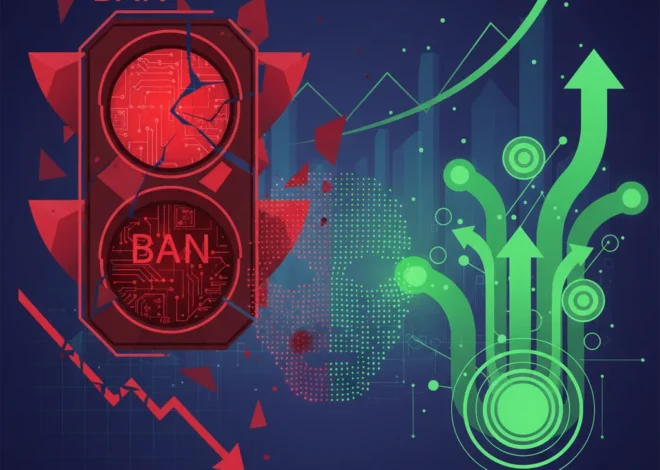
Teenage Hackers vs. The Hospital: Why the Kido Arrests Are a Critical Cybersecurity Wake-Up Call
It sounds like the plot of a 90s movie: a couple of teenagers, hunched over glowing screens in a dark room, bringing a powerful institution to its knees with just a few keystrokes. But the recent news out of London is no Hollywood script. The Metropolitan Police have arrested two teenagers on suspicion of blackmail and computer misuse, linking them to a notorious hacking group and a series of alarming cyberattacks, including one on a hospital and a major food supplier.
This isn’t just another headline to scroll past. It’s a flashing red light on the dashboard of our increasingly digital world. For anyone in the tech industry—from a solo developer to a founder of a high-growth SaaS startup—this story is a crucial case study in the evolving landscape of cybersecurity. It reveals a threat that is younger, more brazen, and capable of causing real-world harm that goes far beyond data theft.
The Human Cost of a “Victimless” Crime
Let’s break down what happened. The arrests are reportedly connected to the “Kido” hack, a breach that exposed sensitive data. But the most chilling part of the story isn’t the data itself; it’s the targets. Hitting a hospital isn’t just about stealing patient records; it’s about disrupting critical care, delaying life-saving procedures, and putting lives at risk. Similarly, attacking a food supplier threatens the supply chain that puts food on our tables.
This is the new frontline of cyber warfare. It’s no longer confined to corporate espionage or financial theft. The digital and physical worlds have merged, and vulnerabilities in our software and cloud infrastructure can have kinetic, real-world consequences. The stereotype of the harmless teen hacker pulling a digital prank is dangerously outdated. Today’s tools and the interconnectedness of our systems mean that a motivated individual with a laptop can cause widespread chaos.
The Changing Face of the Cybercriminal
For decades, the primary adversaries in cybersecurity were seen as sophisticated, state-sponsored groups or large, organized criminal syndicates. While those threats remain very real, the Kido case highlights a different, more unpredictable adversary: the highly skilled, disaffected youth.
The barrier to entry for cybercrime has plummeted. Hacking tools, ransomware-as-a-service kits, and step-by-step tutorials are readily available on the dark web. This accessibility empowers individuals who possess the technical skills but may lack the moral compass or foresight to understand the gravity of their actions. For them, it might start as a challenge—a way to test their programming skills—before escalating into something far more sinister like blackmail.
For startups and tech companies, this presents a unique challenge. The very same young talent you’re trying to recruit to build the next wave of innovation is part of the same demographic that can be lured into cybercrime. It underscores the profound importance of fostering a culture of ethical technology and digital responsibility from the ground up.
Your SaaS Platform: A Fortress or an Open Door?
So, what does this have to do with your business? Everything. Whether you’re building an internal tool or a public-facing SaaS platform, you are a target. The attackers in these scenarios aren’t always looking for a direct, high-value target like a bank. Often, they’re looking for the weakest link.
They leverage automation to scan millions of IP addresses, looking for unpatched servers, weak passwords, or vulnerabilities in common software libraries. A single flaw in your cloud configuration or a moment of carelessness from an employee clicking a phishing link can be the only invitation they need.
The very nature of modern software development—relying on open-source packages, third-party APIs, and complex, distributed systems—creates a vast and complicated attack surface. Every line of code and every integrated service is a potential entry point. This is why security can no longer be a final checklist item before launch; it has to be woven into the fabric of your development lifecycle.
Fighting Code with Code: The Rise of AI in Cybersecurity
The situation may seem bleak, but this is where the incredible power of modern technology comes into play. We can’t fight automated, intelligent attacks with manual, human-led processes alone. The scale is too vast, and the speed is too fast. The future of defense lies in fighting fire with fire—using intelligent systems to counter intelligent threats.
This is the domain of Artificial Intelligence (AI) and Machine Learning (ML).
Here’s how this new generation of cybersecurity works:
- Anomaly Detection: Machine learning algorithms can be trained on a baseline of your network’s “normal” behavior. They can then monitor trillions of data points in real-time, instantly flagging any deviation from the norm—like an unusual login attempt from a new location or a sudden spike in data exfiltration—that a human analyst might miss for hours or days.
- Predictive Threat Intelligence: Instead of just reacting to known viruses or malware signatures, AI can analyze emerging patterns and chatter from across the web to predict the next wave of attacks before they even launch. This proactive stance is a game-changer, moving defense from reactive to predictive.
- Automated Response: When a threat is detected, an AI-driven system


